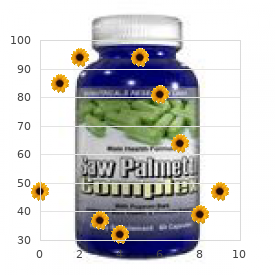"Order genuine benadryl on-line, allergy symptoms for amoxicillin".
By: Z. Tukash, M.A., M.D., M.P.H.
Co-Director, Rutgers Robert Wood Johnson Medical School
They consist of a stalk with fine-branching fronds allergy forecast the woodlands tx discount generic benadryl canada, which tend to break off causing painless bleeding and haematuria allergy treatment in vellore discount 25mg benadryl free shipping. Sometimes the tumour cells are well differentiated and non-invasive but in other cases they behave as carcinomas and invade surrounding blood and lymph vessels allergy shots and beta blockers 25mg benadryl for sale. At an early stage the more malignant and solid tumours rapidly invade the bladder wall and spread in lymph and blood to other parts of the body allergy shots 2 year old cheap 25 mg benadryl mastercard. Stress incontinence this is leakage of urine when intra-abdominal pressure is raised. It usually affects women when there is weakness of the pelvic floor muscles or pelvic ligaments. Urge incontinence Leakage of urine follows a sudden and intense urge to void and there is inability to delay passing urine. This may be due to a urinary tract infection, calculus, tumour or overactivity of the detrusor muscle. Overflow incontinence this occurs when there is overfilling of the bladder and may be due to: retention of urine due to obstruction of urinary outflow. The bladder becomes distended and when the pressure inside overcomes the resistance of the external urethral sphincter, urine dribbles from the urethra. For a range of self-assessment exercises on the topics in this chapter, visit The first part of this chapter explores the structure and functions of the skin, which is also known as the integumentary system. The skin completely covers the body and is continuous with the membranes lining the body orifices. It: protects the underlying structures from injury and from invasion by microbes contains sensory (somatic) nerve endings of pain, temperature and touch is involved in the regulation of body temperature. Structure of the skin the skin is the largest organ in the body and has a surface area of about 1. Between the skin and underlying structures is the subcutaneous layer composed of areolar tissue and adipose (fat) tissue. Epidermis the epidermis is the most superficial layer of the skin and is composed of stratified keratinised squamous epithelium. There are no blood vessels or nerve endings in the epidermis, but its deeper layers are bathed in interstitial fluid from the dermis, which provides oxygen and nutrients, and drains away as lymph. There are several layers (strata) of cells in the epidermis which extend from the deepest germinative layer to the most superficial stratum corneum (a thick horny layer). The cells on the surface are flat, thin, non-nucleated, dead cells, or squames, in which the cytoplasm has been replaced by the fibrous protein keratin. These cells are constantly being rubbed off and replaced by cells that originated in the germinative layer and have undergone gradual change as they progressed towards the surface. The maintenance of healthy epidermis depends upon three processes being synchronised: desquamation (shedding) of the keratinised cells from the surface effective keratinisation of the cells approaching the surface continual cell division in the deeper layers with newly formed cells being pushed to the surface. Hairs, secretions from sebaceous glands and ducts of sweat glands pass through the epidermis to reach the surface. The surface of the epidermis is ridged by projections of cells in the dermis called papillae. The downward projections of the germinative layer between the papillae are believed to aid nutrition of epidermal cells and stabilise the two layers, preventing damage due to shearing forces. Blisters develop when trauma causes separation of the dermis and epidermis and serous fluid collects between the two layers. Melanin, a dark pigment derived from the amino acid tyrosine and secreted by melanocytes in the deep germinative layer, is absorbed by surrounding epithelial cells. The amount is genetically determined and varies between different parts of the body, between people of the same ethnic origin and between ethnic groups. The number of melanocytes is fairly constant so the differences in colour depend on the amount of melanin secreted.


Perforation When an ulcer erodes through the full thickness of the wall of the stomach or duodenum their contents enter the peritoneal cavity allergy shots left out of fridge buy discount benadryl 25mg on-line, causing acute peritonitis (p quorn allergy treatment discount 25 mg benadryl otc. Infected inflammatory material may collect under the diaphragm allergy symptoms wasp sting purchase 25mg benadryl with amex, forming a subphrenic abscess allergy treatment for toddlers buy benadryl no prescription. Gastric outflow obstruction Also known as pyloric stenosis, fibrous tissue formed as an ulcer in the pyloric region heals, causes narrowing of the pylorus that obstructs outflow from the stomach and results in persistent vomiting. Development of a malignant tumour this is frequently associated with chronic gastritis caused by Helicobacter pylori. Malignant tumours this is a common malignancy that occurs more frequently in men than women. The causes have not been established, but there appears to be a strong link with Helicobacter pylori infection, dietary factors and some, as yet unknown, environmental factors. The local growth of the tumour gradually destroys the normal tissue so that achlorhydria (reduced hydrochloric acid secretion) and pernicious anaemia are frequently secondary features. As the tumour grows, the surface may ulcerate and become infected, especially when achlorhydria develops. This condition carries a poor prognosis because spread has often already occurred prior to diagnosis. Commonly tumour fragments have been spread in the blood through the hepatic portal vein to the liver where they lodge and cause metastases. Transmission to the peritoneal cavity may occur when the outermost layer, the serosa, is affected. Lymphatic spread is also common, initially to nearby nodes and later to more distant ones. Congenital pyloric stenosis In this condition there is spasmodic constriction of the pyloric sphincter, characteristic projectile vomiting and failure to put on weight. In an attempt to overcome the spasms, hypertrophy of the muscle of the pylorus develops, causing obstruction of the pylorus 2 to 3 weeks after birth. The cause is not known but there is a familial tendency and it is more common in boys. Diseases of the small and large intestines are described together because they have certain characteristics in common and some conditions affect both. Appendicitis the lumen of the appendix is very small and there is little room for swelling when it becomes inflamed. Microbial infection is commonly superimposed on obstruction by, for example, hard faecal matter (faecoliths), kinking or a foreign body. Inflammatory exudate, with fibrin and phagocytes, causes swelling and ulceration of the mucous membrane lining. In the initial stages, the pain of appendicitis is usually located in the central area of the abdomen. After a few hours, the pain shifts and is localised to the region above the appendix (the right iliac fossa). In more severe cases microbial growth progresses, leading to suppuration, abscess formation and further congestion. The rising pressure inside the appendix occludes first the veins, then the arteries and ischaemia develops, followed by gangrene and rupture. Complications of appendicitis Peritonitis the peritoneum becomes acutely inflamed, the blood vessels dilate and excess serous fluid is secreted. It occurs as a complication of appendicitis when: microbes spread through the wall of the appendix and infect the peritoneum an appendix abscess ruptures and pus enters the peritoneal cavity the appendix becomes gangrenous and ruptures, discharging its contents into the peritoneal cavity. Abscess formation the most common are: subphrenic abscess, between the liver and diaphragm, from which infection may spread upwards to the pleura, pericardium and mediastinal structures pelvic abscess from which infection may spread to adjacent structures. Fibrous adhesions When healing takes place fibrous tissue forms and later shrinkage may cause: stricture or obstruction of the bowel limitation of the movement of a loop of bowel, which may twist around the adhesion causing a type of bowel obstruction called a volvulus (p. Public health measures including clean, safe drinking water and effective sewage disposal, and safe food hygiene practices greatly reduce the spread of these conditions, many of which are highly contagious. Meticulous handwashing after defaecation and contact between the hands and any potentially contaminated material is essential, especially in healthcare facilities. Contamination of drinking water results in diarrhoeal diseases that are a major cause of infant death in developing countries. Typhoid fever this type of enteritis is caused by the bacterium Salmonella typhi, ingested in contaminated food and water. As humans are its only host, it is acquired from an individual who is either suffering from the disease or is a carrier.

Iatrogenic pigmentation of the cornea may occur from prolonged use of silver nitrate allergy treatment doctor 77573 order benadryl 25mg fast delivery. Prolonged topical application of epinephrine in the management of glaucoma may result in black cornea allergy treatment new cheap benadryl 25mg otc. A retained copper foreign body in the eye may produce a grayish-green or golden-brown discoloration of the peripheral corneal stroma (chalcosis) allergy medicine that won't make me sleepy cheap 25mg benadryl otc. Blood staining of the cornea can follow massive hyphema either from a contusion injury or an intraocular surgery allergy treatment for 3 month old generic benadryl 25mg with mastercard. The deeper layers of cornea are stained with blood pigment (hemosiderin) and may develop brown or greenish discoloration simulating dislocation of the lens in the anterior chamber. A brown horizontal line (Hudson-Stahli line) in the inferior third of the cornea may be seen on slit-lamp in elderly persons. Similarly, a vertical spindle-shaped brown uveal pigments deposition Vascularization of the Cornea the cornea is an avascular tissue and presence of blood vessels in the cornea is always pathological. The superficial vascularization of cornea is common in trachoma, superficial corneal ulcers, phlyctenular keratoconjunctivitis, rosacea keratitis and contact lens wearers. The deep vascularization of cornea is seen in interstitial keratitis, deep corneal ulcers, sclerosing keratitis, disciform keratitis and chemical burns. It forms the posterior five-sixths part of the fibrous outer protective tunic of the eyeball. The thickest part is at the posterior pole and the thinnest underneath the insertion of rectus muscles. At the entrance of the optic nerve, the sclera is modified into a sieve-like membrane, the lamina cribrosa, which allows the passage of fasciculi of the nerve. The sclera is pierced by two long and ten to twelve short posterior ciliary arteries around the optic nerve. Slightly posterior to the equator, four vortex veins (venae vorticosae) exit through the sclera. The anterior ciliary arteries and veins penetrate the sclera nearly 3 to 4 mm away from the limbus. The sclera proper is formed by dense bands of parallel and interlacing collagen fibers. The collagen fiber bundles are arranged in concentric circles at the limbus and around the entrance of the optic nerve, elsewhere the arrangement is quite complicated. The lamina fusca has a brown color owing to the presence of a large number of branched chromatophores. The sclera is almost avascular and its histological structure resembles that of the cornea. However, sclera is opaque due to the hydration and irregular arrangement of its lamellae. The condition may be unilateral (more than 60%) or bilateral, predominantly affecting the young women. Etiology the precise cause is not known but it is considered to be a hypersensitivity reaction to an endogenous tubercular or streptococcal toxin. Episcleritis may be associated with rheumatoid arthritis, polyarteritis nodosa, spondyloarthropathies and gout. Clinical features Redness, ocular discomfort or occasional pain, photophobia and lacrimation are the usual symptoms. Occasionally, a fleeting type of episcleritis, episcleritis periodica fugax, may be seen. Scleritis Scleritis is a chronic inflammation of the sclera proper often associated with systemic diseases. Etiology Scleritis is caused by an immunemediated vasculitis that may lead to destruction of the sclera. Scleritis is frequently associated with connective tissue or autoimmune diseases, especially rheumatoid arthritis (1:200 patients).
Purchase benadryl amex. Difference Between Cold and Allergy Symptoms.



